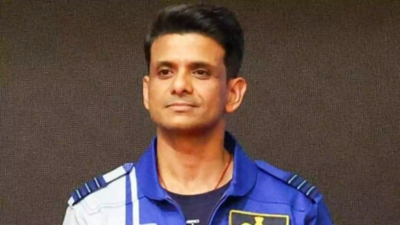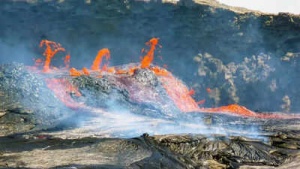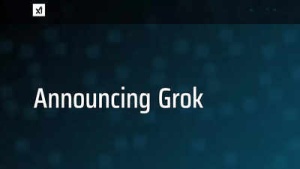The Axiom-4 (Ax-4) mission, carrying a crew including India's Shubhanshu Shukla, launched from NASA's Kennedy Space Center on Wednesday at 12:01 pm IST, setting course for the International Space Station (ISS). The crew, consisting of Shukla, Anne McClain, Nichole Ayers, and Peggy Whitson, are undertaking a roughly 29-hour journey to the orbital outpost. Docking is scheduled for 4:30 pm IST on Thursday at the space-facing port of the Harmony module, where they will spend approximately two weeks conducting scientific research.

The mission began at Launch Complex 39A, the same site from which Neil Armstrong embarked on his historic Moon mission. The Ax-4 crew, suited up in specialized flight gear, arrived at the pad and entered the Dragon capsule "C213". They then completed pre-launch checks with SpaceX and NASA teams.
Approximately 35 minutes before launch, the Launch Director authorized fueling after the crew's emergency escape mechanism was activated. The Falcon-9 rocket received its supercooled liquid oxygen and RP-1 kerosene fuel. With five minutes remaining, Dragon transitioned to internal power. The countdown required perfect synchronization of all systems.
At T-0, the nine Merlin engines of Falcon-9 ignited, propelling the vessel skyward. Within sixty seconds, the craft exceeded the speed of sound. The "Max Q" phase, during which the vehicle experienced peak aerodynamic stress, occurred at 57 seconds. The vessel continued its trajectory towards low-Earth orbit (LEO), with the crew experiencing intensifying gravitational forces.
Roughly 150 seconds after launch, the first stage detached and returned to Earth, targeting an automated landing on an Atlantic Ocean platform. The second stage continued to propel Dragon towards orbit.
Ten minutes post-launch, Dragon separated and began its independent flight. The nose cone opened, revealing essential navigation equipment. The craft reached speeds exceeding 27,000 km/hr, completing an Earth orbit every 90 minutes.
The subsequent 20-24 hours involved precise orbital adjustments. Dragon executed calculated engine burns to align with the ISS trajectory, utilizing GPS, radar, and internal sensors for positioning.
Dragon approached the ISS systematically, pausing at designated waypoints from 400 meters inward. Ground control authorized each progression. At 20 meters, the craft's laser sensors and cameras guided it towards the Harmony module's docking port.
The connection occurred in two phases: magnetic soft capture, followed by mechanical hard capture, establishing an airtight seal.
After thorough pressure and leak verification, the crew entered the ISS. The Ax-4 team commenced their two-week scientific program, which includes diabetes research. For Shukla, this mission signifies a personal achievement and highlights India's increasing presence in space exploration.
Newer articles
Older articles
 Moto G54 Gets Significant Price Cut in India, Making Budget Smartphone Even More Appealing
Moto G54 Gets Significant Price Cut in India, Making Budget Smartphone Even More Appealing
 Africa's Rift Valley: Mantle Upwelling Drives Continent's Split and Birth of New Ocean
Africa's Rift Valley: Mantle Upwelling Drives Continent's Split and Birth of New Ocean
 X Cracks Down: Over Half a Million Indian Accounts Suspended for Policy Breaches
X Cracks Down: Over Half a Million Indian Accounts Suspended for Policy Breaches
 Vijay Sethupathi Apologizes Amid Controversy Over Son Surya's Debut Film 'Phoenix'
Vijay Sethupathi Apologizes Amid Controversy Over Son Surya's Debut Film 'Phoenix'
 Jadeja's Accuracy Questioned: Ex-India Pacer Slams Spin Strategy in England Test Loss
Jadeja's Accuracy Questioned: Ex-India Pacer Slams Spin Strategy in England Test Loss
 IRCTC's AI Chatbot Revolutionizes Train Ticket Booking, Refunds, and Information Access
IRCTC's AI Chatbot Revolutionizes Train Ticket Booking, Refunds, and Information Access
 Ashada Gupt Navratri 2025: Unveiling Dates, Sacred Rituals & Hidden Significance of the Monsoon Festival
Ashada Gupt Navratri 2025: Unveiling Dates, Sacred Rituals & Hidden Significance of the Monsoon Festival
 Google Maps Enhances Directional Accuracy with Fused Orientation Provider Update
Google Maps Enhances Directional Accuracy with Fused Orientation Provider Update
 xAI to Open Source Grok, Democratizing Access to Musk's AI Chatbot
xAI to Open Source Grok, Democratizing Access to Musk's AI Chatbot
 Android Users Urged to Patch Now: Critical Security Flaws Expose Devices to Attacks
Android Users Urged to Patch Now: Critical Security Flaws Expose Devices to Attacks